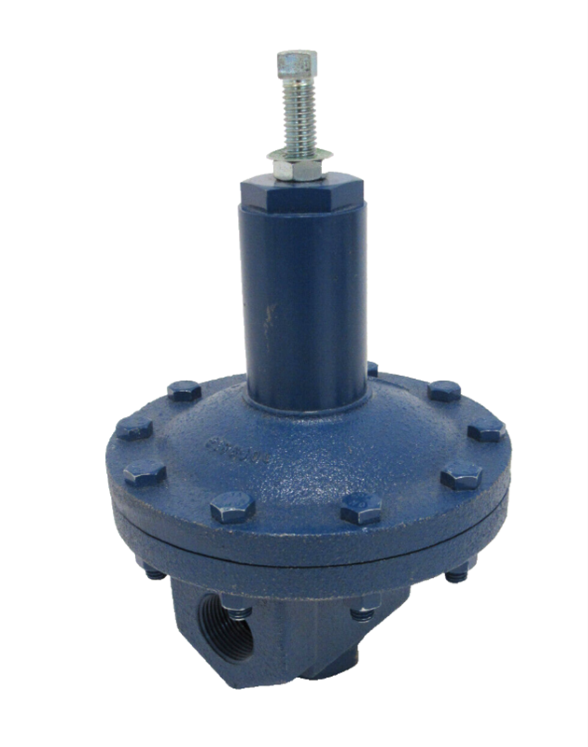Steam Heating Systems Part 3: Application and Benefits of Small Self-Contained Steam Pressure Regulators
/By Mark Bingham
In our last blog article, we discussed the advantages of distributing steam at pressures that are likely higher than the ideal pressure for condensing steam in a heating system. This necessitates the use of pressure reducing valves to reduce the steam pressure to a point that is suitable for the downstream processes the steam serves. A self-contained pressure reducing valve like the Hoffman 754 is suitable for loads that are less than a few hundred pounds per hour in systems and pressure control is not highly critical. While the performance of these valves is not as good as pilot operated valve arrangements, their ease of installation and low cost make them a good choice for many small systems.
A self-contained steam pressure regulator reduces upstream (supply) pressure to a controlled downstream (outlet) pressure without requiring an external control signal.
Key components of a self-contained regulator are:
Diaphragm. Responds to downstream pressure.
Spring mechanism. Provides an adjustable set point. The setpoint is increased by turning the set screw clockwise. When the desired setting is achieved the locknut should be tightened.
Valve body and seat. Modulates flow to maintain set pressure.
As downstream pressure rises above the set point, the diaphragm pushes against the spring, throttling the valve toward closed. When downstream pressure falls, the spring opens the valve, admitting more steam to increase the pressure.
Figure 1. Hoffman 754 Self Contained Regulator
Figure 2. Cutaway of a Hoffman 754 Regulator
Advantages of self-contained regulators are:
Simplicity. No external pilot lines or controls are required.
Compact size. Well-suited for installations with limited space.
Ease of installation. Only inlet and outlet connections are needed, minimizing installation time and complexity.
Cost effectiveness. Lower cost than pilot operated regulators.
Installation considerations to ensure reliable operation:
Install the regulator in a horizontal pipeline.
Provide a strainer upstream to protect the seat from debris.
Include an upstream steam trap to prevent condensate from entering the valve and damaging it.
Provide a pressure gauges at the inlet and outlet to monitor performance and assist in setting the outlet pressure.
Install isolation valves upstream and downstream to facilitate service or replacement.
Small self-contained steam pressure regulators provide an efficient, low-cost means of reducing and controlling steam pressure in small applications. For larger capacities or critical precision applications, pilot-operated valves are a better choice.
In our next post we’ll introduce pilot operated main valves.




